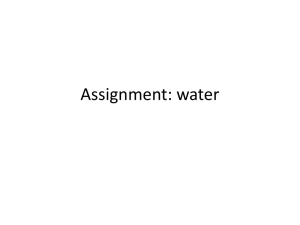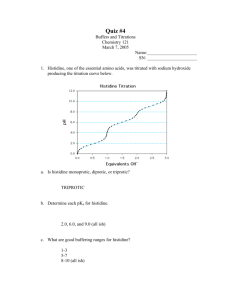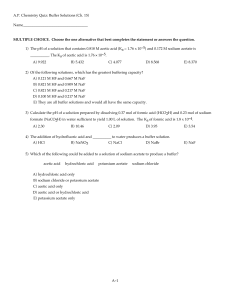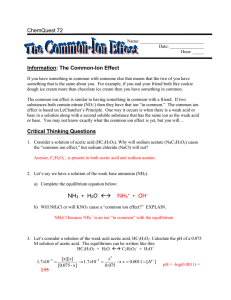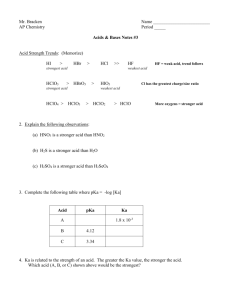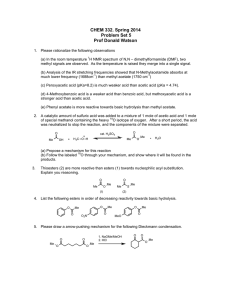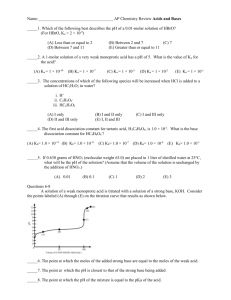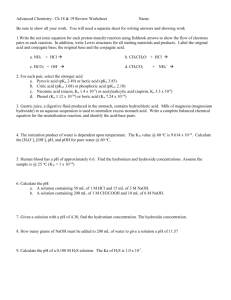Ch 15 – Describing Buffering Capacity (Henderson
advertisement
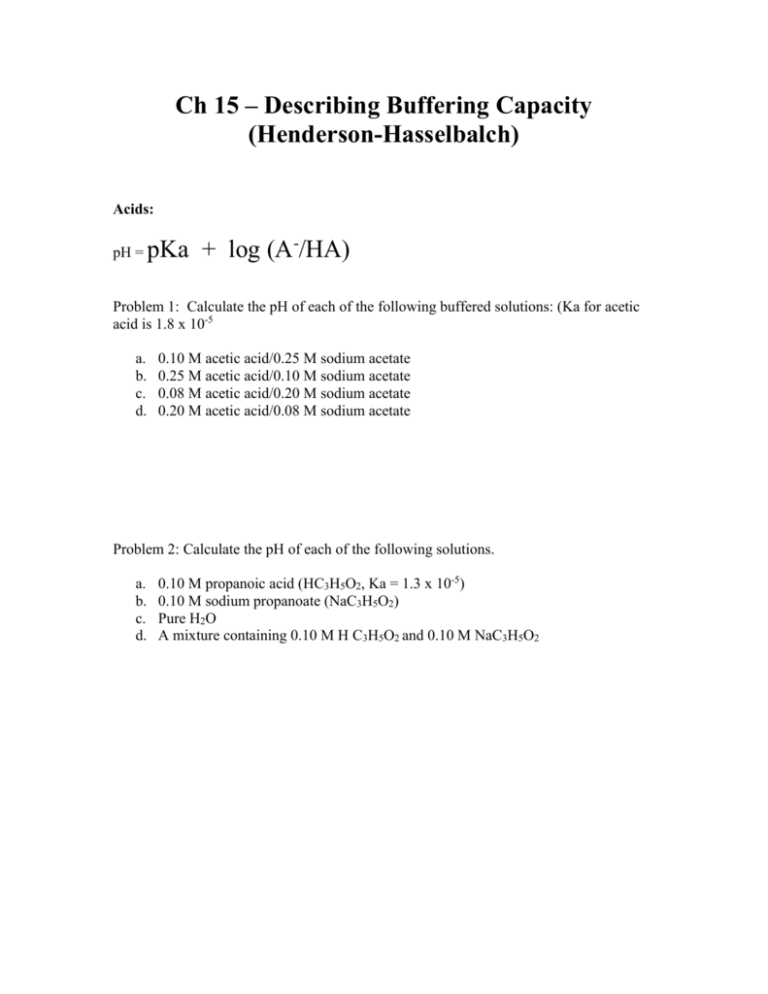
Ch 15 – Describing Buffering Capacity (Henderson-Hasselbalch) Acids: pH = pKa + log (A-/HA) Problem 1: Calculate the pH of each of the following buffered solutions: (Ka for acetic acid is 1.8 x 10-5 a. b. c. d. 0.10 M acetic acid/0.25 M sodium acetate 0.25 M acetic acid/0.10 M sodium acetate 0.08 M acetic acid/0.20 M sodium acetate 0.20 M acetic acid/0.08 M sodium acetate Problem 2: Calculate the pH of each of the following solutions. a. b. c. d. 0.10 M propanoic acid (HC3H5O2, Ka = 1.3 x 10-5) 0.10 M sodium propanoate (NaC3H5O2) Pure H2O A mixture containing 0.10 M H C3H5O2 and 0.10 M NaC3H5O2 Problem 3: Calculate the change in pH that occurs when 0.010 M HCl is added to 1.00 L of each of the following solutions: Solution A: 5.00 M HC2H3O2 and 5.00 M NaC2H3O2 Solution B: 0.050 M HC2H3O2 and 0.050 M NaC2H3O2 Ka for acetic acid is 1.8 x 10-5 Henderson-Hasselbalch pKa = -(log 1.8 x 10-5) (1) = 4.74 H+ Initial After 0.010 M 0 C2H3O2- HC2H3O2 5.00 M 5.00 M 4.99 M 5.01 M PH = pKa + log (A-/HA) = 4.74 + log (4.99/5.01) = 4.74 Virtually no change in pH for solution A when 0.010 M HCl is added Try solution B pKa = -(log 1.8 x 10-5) (1) = 4.74 H+ Initial After 0.010 M 0 C2H3O2- HC2H3O2 0.050 M 0.050M 0.040 M 0.060 M pH = pKa + log (A-/HA) = 4.74 + log (0.040/0.060) = 4.56 Due Tuesday p 759-760 #12, and 17 (refer to our problem #2. This is the book’s #15)

